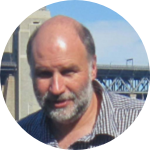About This Project
We know that neutrons can freeze supercooled water. We know that there are many more cosmogenic neutrons incident at the poles than at the equator. We know that there is insufficient dust and aerosols in the atmosphere at the poles to account for the numbers of ice particles seen in clouds. Perhaps neutrons are the cause and if so cloud microphysics will make a large breakthrough and climate models will need adjustment.
Ask the Scientists
Join The DiscussionWhat is the context of this research?
The IPCC reports note that we don't know how ice clouds form at high latitudes, as there seems to be insufficient dust and minerals to account for the nucleation seen. A few years ago, my colleagues and I at The University at Albany, NY showed that neutrons can nucleate deeply supercooled water. We suspect that cosmogenic neutrons (from muons) do in fact cause the nucleation of water droplets in clouds at high latitudes.
If so, climate models can be re-written and become more accurate.
What is the significance of this project?
Climate models are becoming critical as the world warms. They suffer in some ways, including the lack of understanding of how clouds freeze and what causes the ice nucleation. Modelers around the world have to gloss over the lack of data around dust and minerals and biologics found in the atmosphere at high latitudes, where the levels of these ice nucleators are too low to explain the observed levels of ice in the clouds.
A new avenue is needed and we believe that neutrons are that source.
What are the goals of the project?
To show that heterogeneous nucleation of deeply supercooled water (on a given sample) is different at 70 plus North latitude than at lower latitudes. if we can conclusively show this, other will re-examine historical data and any anomalies to see if the high neutron flux may have been the cause in those instances. Further, other groups can, and will, readily be able to enumerate the neutron flux and match it to the observed ice cloud nucleation levels.
Budget
Currently, I will self-fund to see if this idea has merit. I am travelling to Barrow, Alaska in July to work with scientists on the ground there to compare their ice nucleation data with that I will produce. I am measuring nucleation of a sample of water at various latitudes, ending up at Barrow. The cost of my equipment is low, the travel is medium cost - but significant for me to self-fund.
Endorsed by
 Project Timeline
Project Timeline
Between March, 2024 and July, 2024 we will build a portable ice nucleation spectrometer and test it at the latitude of Sydney, Australia. It will tell us the exact nucleation characteristics on a given sample of very clean water sealed into the device.
In July, 2024 we will take the same device and sample to Los Angeles, Anchorage and on to Barrow, testing the nucleation temperatures and spreads at each latitude.
Mar 19, 2024
Project Launched
Jul 06, 2024
travel to Los Angeles
Jul 09, 2024
travel to Anchorage
Jul 13, 2024
travel to Barrow
Meet the Team
peter wilson
Peter is a physicist, previously employed at Cornell, UCSD, Tsukuba in Japan, and Tasmania. He has studied ice nucleation and ice binding proteins since the mid-1980s, including many summers spent in Antarctica researching the so-called antifreeze proteins found in the fishes there.
In 2023, Peter was the Springer Visiting Professor in Engineering at UC Berkeley. Peter currently holds Adjunct Professor roles at Scripps Institution of Oceanography and at The University at Albany, NY.
Project Backers
- 1Backers
- 1%Funded
- $20Total Donations
- $20.00Average Donation

